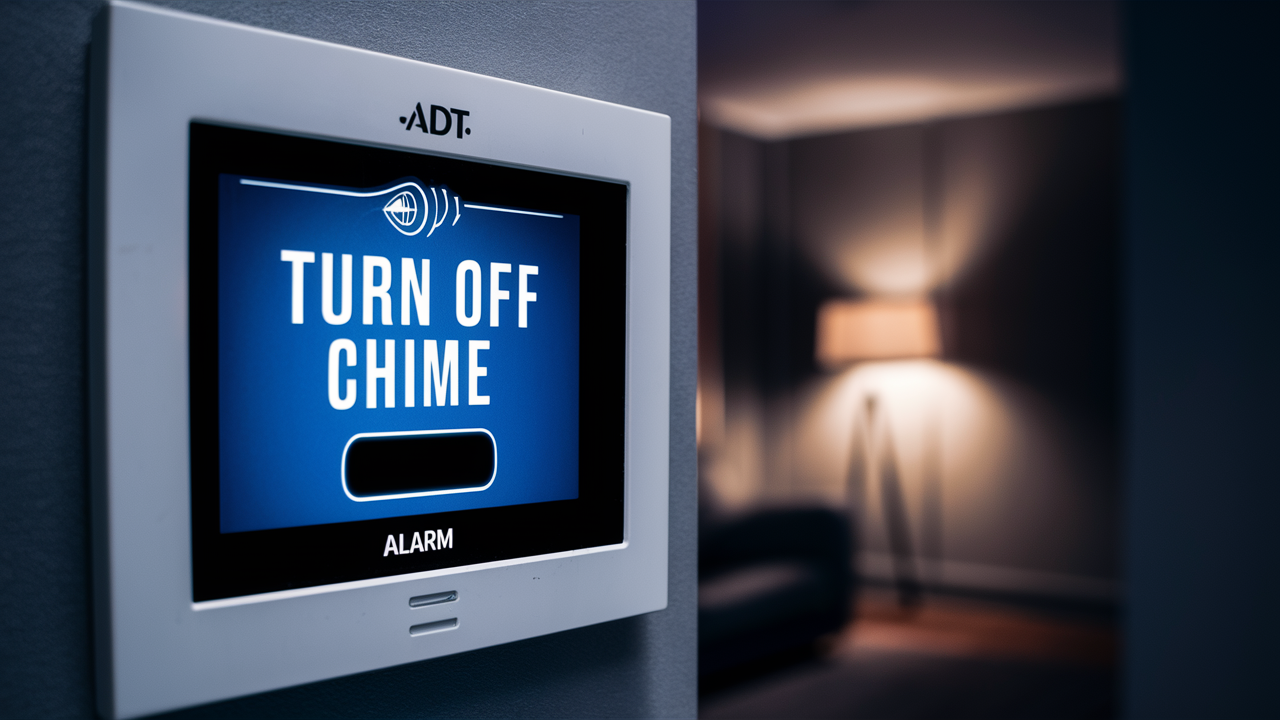One particular feature of the
ADT alarm panels are the chime feature that is relevant for informing or notifying you of doors or windows being opened while the ADT system is not activated. The chime makes a sound whenever defined access points are opened, thus providing you with information about event occurrence even if you are not using the system’s alarm. Nevertheless, one can also point out many situations when the audible chime may seem quite invasive and redundant. Fortunately, the procedure by which the chime can be deactivated if only for a while, is quite simple on most panels that are manufactured by ADT.
Find your ADT alarm panel
The first thing that needs to be done is the location of the ADT alarm system panel as this is where the chime function will be disabled and enabled. Where you install this device may depend on your configuration, it will usually be installed in a hallway, utility room, basement, or the master bedroom master closet. If you have a wired system, then the whole main panel with all the most important electronics can be located in the basement, garage, or closet and you would just have the keypad on the wall in another room.
Determine Alarm Panel Model ADT has alarm systems
From some of the key security manufacturers, though the equipment used for the installation differs. Once you have found the position of your alarm panel or control panel, you should take your time to look for the model number that is usually imprinted at the bottom or the top of the given panel. Popular ADT home security systems are Honeywell VISTA-20P, DSC EXCEL, and 2GIG GO! Control GC3, and Qolsys IQ Panel 2 Plus. The model number is of special relevance as button names and their positions vary from panel to panel.
Put User Code If It Is Needed On some of the systems, keying buttons on the panel will not work in any way unless you enter the 4-digit or 6-digit user access code. It has its code to differentiate between the users/families and this code is programmed differently thus helping in identifying the user making modifications. In case, you have a user code that needs to be entered to allow button presses, input your code after turning on the display. Access confirmation is given by a beep sound and LED light to ensure that the system has responded positively.
Locate the Chime Button It is also very disconcerting to have a plethora of small buttons and icons on today’s sleek-looking keypad-style alarm panels. Fortunately, the chime function usually has its button, which is usually indicated as ‘Chime’ or something similar. Some labels used for this button are “Chime,” “Door Chime”, or a label containing a musical note or a symbol of a bell. The alarm button is usually placed at the bottom row along with other shortcut buttons to Arm, Check, and set Exit Delay immediately.
Press the Chime Button It means that once you have unlocked the system and found the chime button, then you can turn off the feature by pressing it. As for the button, most panels are equipped with an individual LED lamp on the button plane: shining, the chime is on. Hence, when the button is pressed once the light goes off, and at the same time the doorbell sound is deactivated. I observed that tapping on the button once deactivates the feature and the LED goes off while pressing it again activates the feature and the LED turns on. It is not necessary to ensure that changes by hitting Disarm or Exit on older keypad panels to turn on the chime. But some modern touchscreens will make certain adjustments only if the user controls the need to save the changes.
Test Chime Function Before turning off the system
You have to open and close a door or a window that should ring the chime when the system is not armed. Wait for the audible sound – there will be a specific tone that is used in the process – if it does not sound upon entry, you have successfully disabled the feature from the panel of the alarm system. However, if you find that the chime is still continuously ringing after you have opened the door, then the feature is still turned on. Make sure that the light that is associated with the chime button is off before pressing the button to turn on or off the setting if needed. You can go on testing and fixing until you can stop the audible alert as It can be done in the following manner.
Conclusion
Enable Chime When Desired The process is rather similar in the case when you want to activate the chime again: you just have to push the button that is marked as ‘Chime’ on your ADT alarm panel. The integrated light will light up showing that the feature is now active. Again, you want to try out entry points that should trigger the chime just to confirm that the chime was correctly set up. Of course, having the chime disabled is most likely preferable in some quiet environments or certain hours of the day, but the option to turn the chime on is useful as it adds an extra layer of caution. This is however in addition to having the familiar chime switched on/off as may be desired directly from the system’s keypad.
Protect your home today with ADT’s top-rated security solutions!
Call now at +1 877-470-7879 to get a free consultation and find out how you can secure your home with the best in the business. Don’t wait—ensure your peace of mind with ADT!


